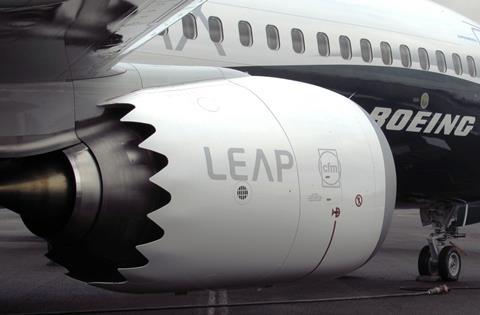GE Aerospace will soon introduce new X-ray technology intended to help technicians better identify anomalies in metallic parts and allow airlines to keep some components in service longer.
The company will start using the new “non-destructive open-beam X-ray fluorescence spectroscopy [XRF]” method at its new Ohio-based Services Technology Acceleration Center (STAC), which is scheduled to open in September, GE said on 19 June
“XRF provides a view of the part’s chemical composition that can help a service engineer more readily spot anomalies,” says GE, adding that the technology can detect “microstructural variations in metal parts”.

The scans can likewise help technicians better identify parts that can safely be returned to service, helping airlines avoid replacing components prematurely, it adds.
Other industries make wide use of XRF to determine a material’s elemental composition: museums and auctioneers, for instance, use the technique to identify forged art.
When irradiated by X-rays, elements emit a specific “X-ray fluorescence proton”. XRF works by analysing the fluorescence produced when a material is irridiated to identify the elements present, says Massachusetts firm Bruker, which helped develop the technology for GE.
The engine maker plans first to use the method at its STAC facility in Ohio before bringing the technology to its other maintenance shops globally. XRF is only one scanning method used by GE to inspect engine components. It also uses ultrasound scans, computed tomography, flash thermography, eddy current testing and fluorescent-penetrant inspection.
The new technology centre reflects a broader effort by GE to expand its aftermarket services capabilities. The company has reported recent surging demand for engine maintenance, the result of airlines keeping older powerplants in service longer.
“Retirements are lower than what we had projected at the beginning of the year,” GE chief executive of commercial engines and services Russell Stokes says. “Given some of the delivery challenges, we’re seeing an increase in the aftermarket side of the business.”
Carriers are squeezing more life out of older jets and engines due to factors including durability problems with new-generation engines and limited availability of new jets, a result of Airbus and Boeing struggling to ramp production amid ongoing parts and labour shortages.
Boeing has also significantly curtailed 737 Max production in recent months to address quality and safety issues that became apparent following the January in-flight failure of a 737 Max 9’s door-plug.


























